Modern Industry and the UT Drone
Every industry around the globe operates under its own set of rules and regulations to ensure the safety of people, the environment, and the equipment being used. These guidelines are established by various entities, ranging from government bodies and national agencies to international organizations and multinational institutions.
Successful inspections rely on reliable data, yet gathering this information isn't always straightforward. For assets like ships or storage tanks, obtaining necessary data can be challenging due to safety concerns. Alternative methods of access are becoming increasingly popular, and drones play a significant role in this shift. They enable access to previously unreachable areas at heights, in confined spaces, or even underground, providing crucial data vital for inspections that were once inaccessible. This is where the concept of UT drones comes into play.
 Caption: All industries implement stringent safety protocols. Sectors such as shipping depend on ultrasonic testing equipment to assess the condition of assets.
Caption: All industries implement stringent safety protocols. Sectors such as shipping depend on ultrasonic testing equipment to assess the condition of assets.
What is a UT Drone
A UT drone is an unmanned aerial vehicle (UAV) equipped with the capability to perform ultrasonic thickness measurements. This technology is used to collect ultrasonic thickness (UT) data from locations that are difficult or unsafe for inspectors to access, such as chimney stacks, ballast tanks, or flue ducts.
A UT drone plays a key role in drone-enabled non-destructive testing, where UAVs help streamline inspection processes. By providing safer access to assets, drones not only enhance inspection efficiency but also improve overall asset management practices.
 Caption: The Elios 3, shown here, is an example of a UT drone.
Caption: The Elios 3, shown here, is an example of a UT drone.
How Does a UT Drone Work
These measurements are obtained when ultrasonic testing equipment (such as a UT probe or gauge) is placed against the test surface and ultrasonic waves are transmitted through the material. The probe measures how the sound waves bounce back and uses this data to determine the thickness of the material under test.
Many traditional drones struggle to perform UT measurements because they are not designed to withstand contact with surfaces or hover in place for extended periods. This is why UT drones are highly specialized and built to function in environments that standard drones cannot handle.
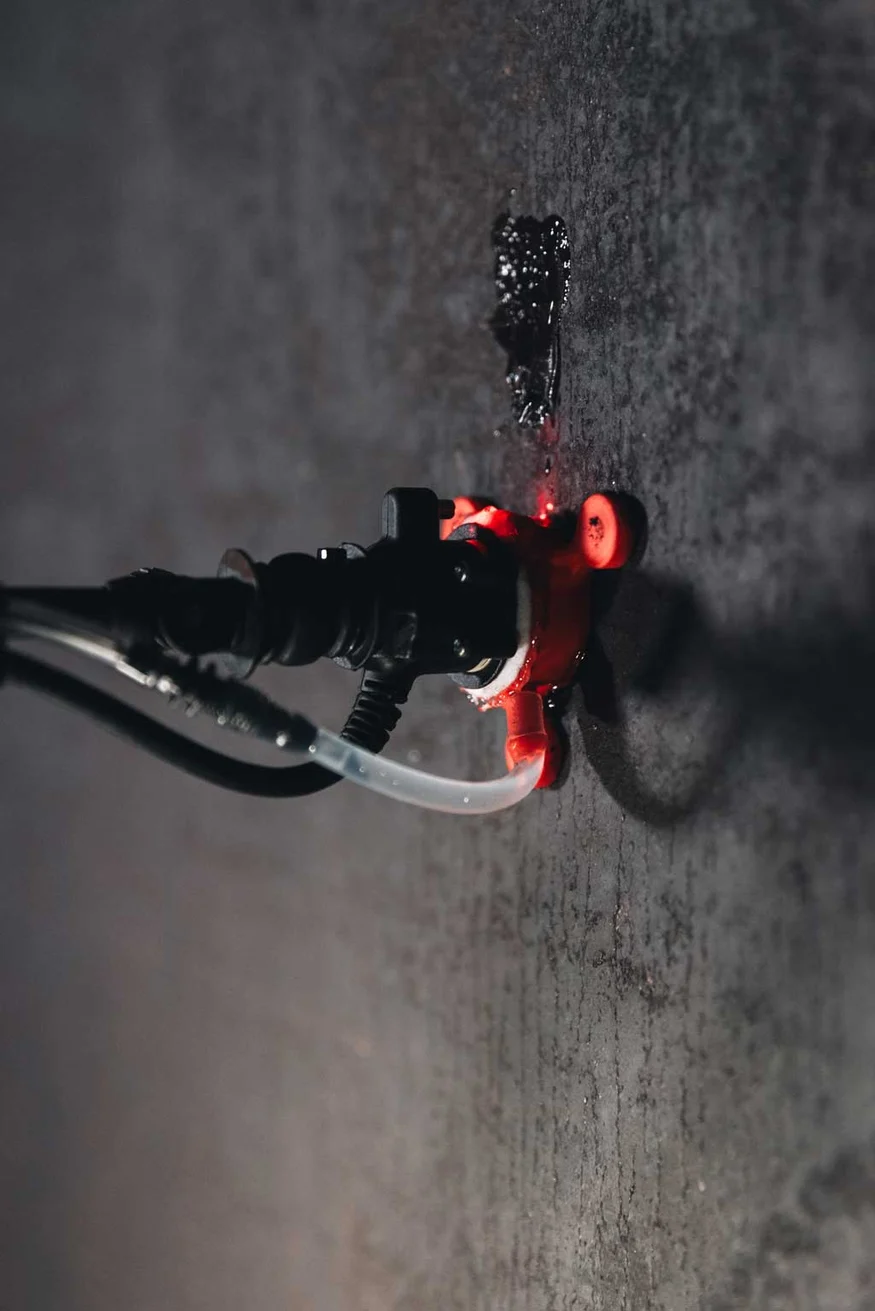 Caption: A UT drone carries a special payload with an ultrasonic thickness measurement probe.
Caption: A UT drone carries a special payload with an ultrasonic thickness measurement probe.
UT drones approach a measurement point, place their probe/gauge against the surface, and then dispense couplant solution to ensure optimal sound transmission from the probe to the material. The pilot then takes the UT measurement. Some UT drones allow the user to adjust the gain and gates during the measurement according to the material's specific requirements. Once the measurement is complete, the UT drone detaches from the test point and moves to another location.
How Many Measurements Can a UT Drone Take?
The number of measurements a UT drone can complete depends on its flight time, the amount of couplant it can carry, and the skill of the pilot. For instance, the Elios 3 UT drone can perform up to 40 UT measurements per flight.
Benefits of a UT Drone
As part of drone-enabled non-destructive testing, a UT drone offers numerous advantages in terms of safety, efficiency, and accessibility, all of which contribute to reducing the overall cost of a UT inspection.
SAFETY
Using a UT drone eliminates human exposure to risks associated with inspections. Some measurement points are either at great heights or in confined spaces, requiring special permits and safety protocols to access. Finding UT-certified staff who are also licensed for rope access is challenging, increasing demand for highly skilled inspection personnel to ensure safe inspections.
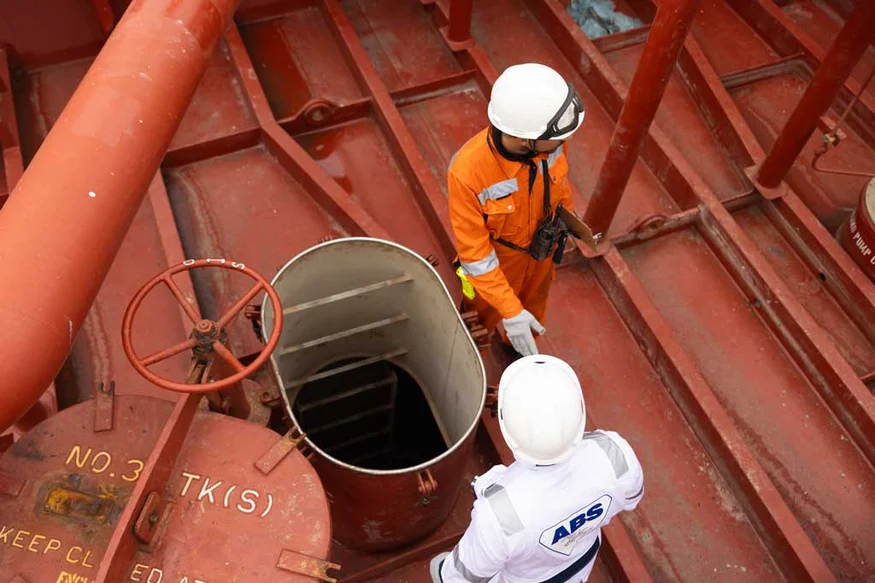 Caption: A UT drone can inspect confined spaces like this tank instead of sending people.
Caption: A UT drone can inspect confined spaces like this tank instead of sending people.
On the other hand, UT drones can navigate spaces as small as 50x50 cm (20x20 inches) and gather dozens of measurements per flight. This removes exposure to risks in confined spaces such as toxic gases, suffocation, and even drowning. Similarly, a UT equipment drone can access high points like inside chimney stacks or the upper reaches of a ship hull, which typically requires scaffolding or rope access. In some cases, such as flue duct inspections, regulations require exits at both ends for human entry, involving removing and opening some parts of the duct like fan casings to comply with regulations. A UT drone, however, can enter and exit without human entry, thus reducing the downtime associated with the inspection.
EFFICIENCY
A UT drone inspection can be completed in less than an hour. This is because drones can be deployed within minutes of arriving on-site. The pilot can guide the drone beyond the line of sight using its high-definition camera—and some UT drones even offer live LiDAR scans that provide a 3D map of its surroundings.
Similarly, a drone can quickly move between UT measurement points, even if they're far apart. This is much faster than when an inspector has to move around scaffolding or when rope access technicians have to adjust between locations. Additionally, drones are much quicker than mobile elevated work platforms (MEWPs), able to fly inside and outside of assets without limitations on height or breadth of areas they cover.
The speed at which UT inspections can be completed with drones is also enhanced by the recording process. In the past, UT measurements would be recorded by a rope access technician shouting values down to someone on the ground. This method doesn't clearly indicate the exact location of a measurement point and leaves a high margin for error. Some inspectors wrote values onto the asset in chalk, but this is not weatherproof and can be unclear for future inspectors.
By contrast, a UT drone can tag the location of individual measurement points, making it easy to identify areas with higher corrosion or degradation rates and direct maintenance teams to those exact locations. When these UT measurement points are tagged inside a 3D scan, as in the case of the Elios 3 UT drone, a digital record of the asset is automatically created, making it easy to update records over time and track changes.
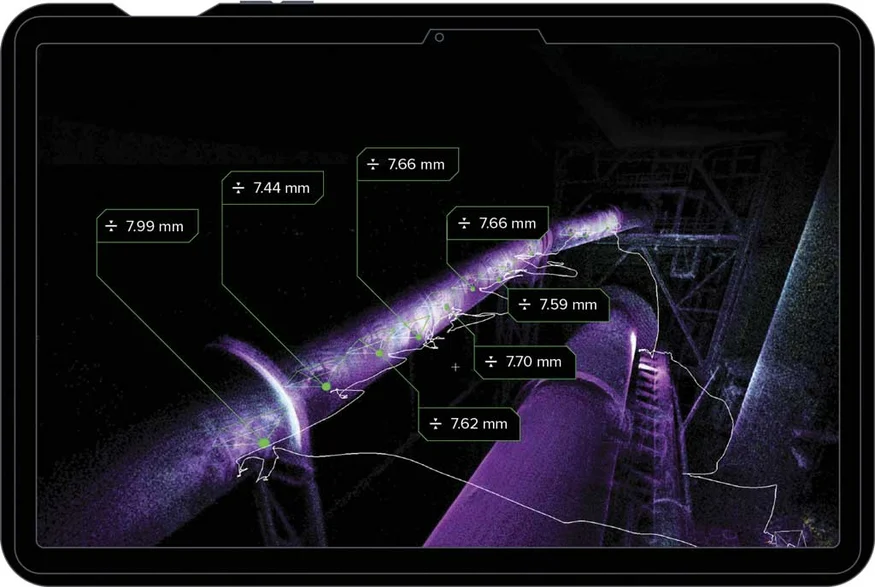 Caption: Here are ultrasonic thickness measurements that have been geotagged by a UT drone during flight.
Caption: Here are ultrasonic thickness measurements that have been geotagged by a UT drone during flight.
With a UT drone, the overall process of asset management is streamlined, extending asset lifetimes through improved management practices.
ACCESS
A UT drone can reach locations that traditional methods cannot. Whether it’s confined spaces, inside stacks, or even inside machinery, these UAVs empower drone-enabled non-destructive testing in ways never seen before. Certain UT drones can even fly in areas without GPS, unlocking access to underground or confined spaces effortlessly.
The enhanced access and ease of ultrasonic testing with a UT drone also have an additional advantage: it makes it possible to conduct inspections more frequently. When a UT drone can take measurements in minutes at heights where scaffolding would take over a day to mount/dismantle, it becomes easier to conduct inspections more often. The more frequent UT inspections are performed, the earlier problems can be identified, and a more up-to-date overview of an asset's condition can be maintained. UT drones promote optimal asset management practices by making it simpler to obtain critical data without prolonged downtime or higher costs.
 Caption: A UT drone can explore complex environments and gather critical data that was previously unavailable.
Caption: A UT drone can explore complex environments and gather critical data that was previously unavailable.
UT Drone Case Studies
⦠How a UT drone saved 15,000 work hours in a ship hull inspection
The Elios 3 UT was utilized for the periodic survey of cargo oil tanks in a medium-sized ship. Each cargo tank required a close visual survey and UT measurements. Traditionally, this would necessitate scaffolding and a team of 16+ people to access all measurement and survey areas. With the Elios 3, all measurements were gathered using the UT drone.
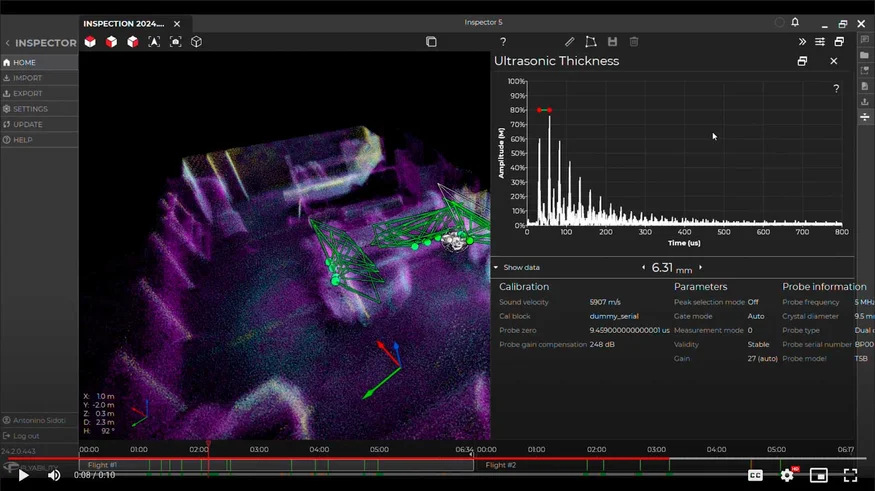
An example point cloud with the Elios 3 UT payload showing spot measurements located in the point cloud.
Learn more about the UT drone for ship surveys.
⦠A UT stack inspection with a drone
A stack at a power generation site needed an inspection. The insulation on the exterior made it difficult to inspect, and the site's location in Northern Canada posed additional weather challenges. The Elios 3 UT drone provided an ideal alternative means of access, allowing the drone to fly inside the stack where there was no insulation to gather measurements, eliminating the need to remove insulation or use scaffolding.
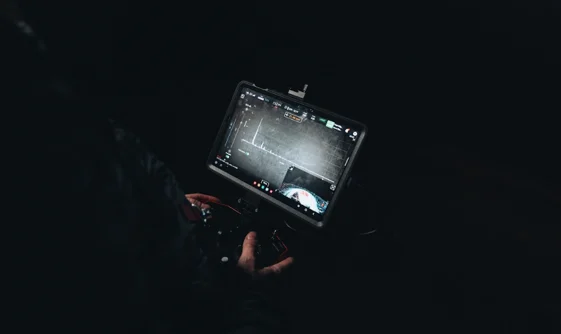 Thanks to the Elios 3's camera, it is possible to complete UT inspections beyond the visual line of sight. The Cockpit app can also be used to manually adjust the gain and gates, as shown on the left side of the screen here.
Thanks to the Elios 3's camera, it is possible to complete UT inspections beyond the visual line of sight. The Cockpit app can also be used to manually adjust the gain and gates, as shown on the left side of the screen here.
Read the full UT stack inspection case study.
⦠Flue Duct and Silo UT measurements
At a cement plant in Germany, an inspection team wanted to test whether using a UT drone was feasible. They found that the Elios 3 UT could inspect standard assets like flue ducts and silos without the need for scaffolding or disrupting work, and provided easy access to assets not usually inspected due to their inaccessibility.
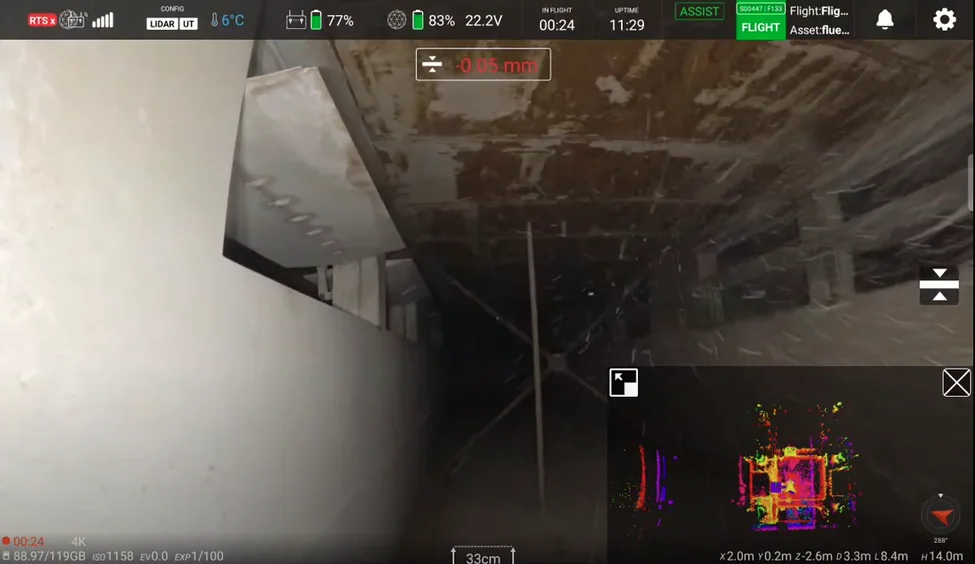
The Elios 3 and UT payload reached inside the flue duct despite dust and the bends in the duct's shape.
Explore the Elios 3 UT for cement plant inspections.
Â
Plastic Granulating Line,Plastic Pelletizing Line,Plastic Pelletizer,Plastic Granulation Machine
Zhangjiagang Polestar Machinery Co.,Ltd , https://www.polestarpm.com